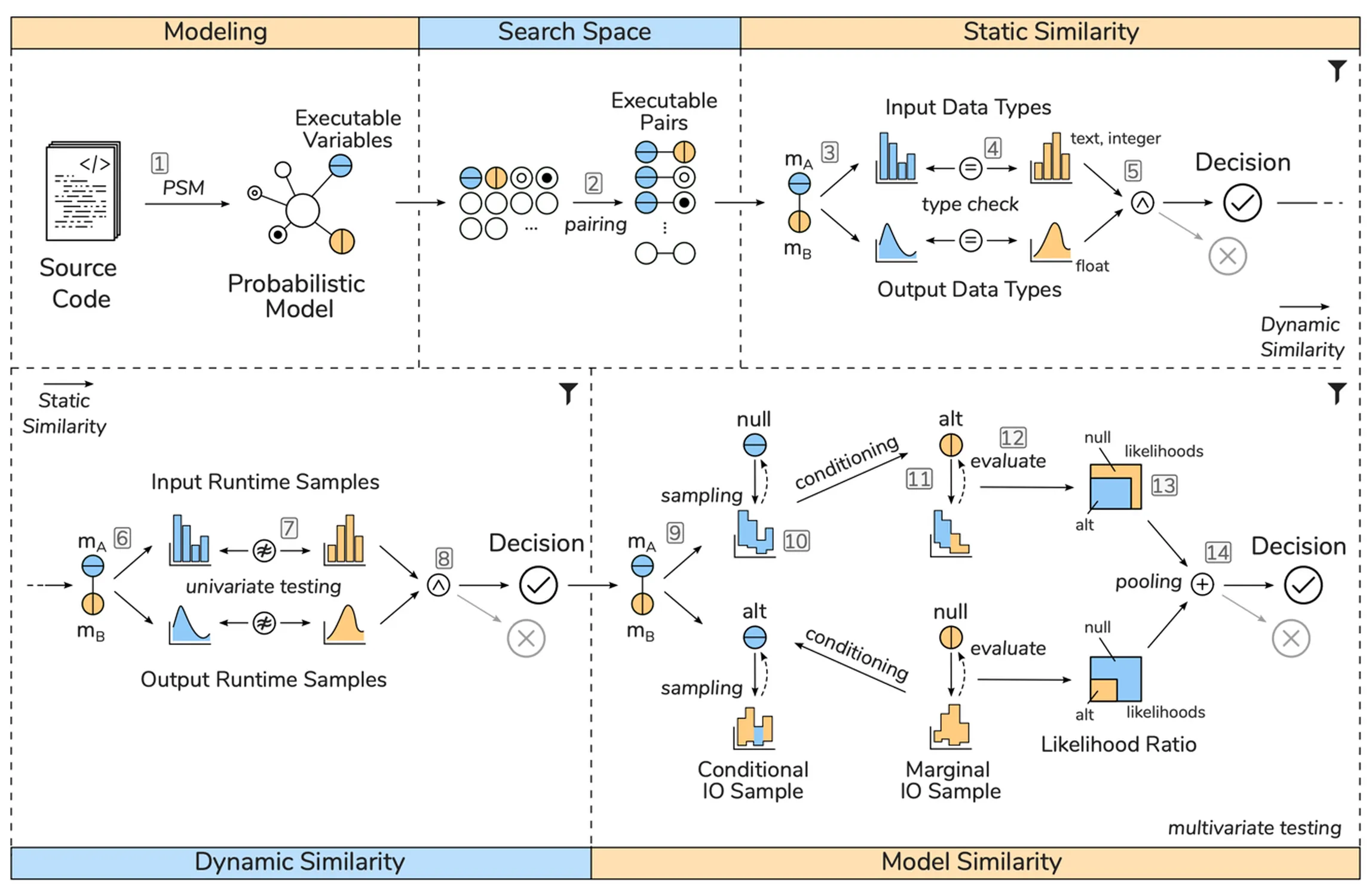Semantic Clone Detection: A Breakthrough in Software Similarity Analysis
Semantic clone detection identifies program elements with similar runtime behavior, even with 0% syntactic similarity. This article introduces SCD-PSM (Semantic Clone Detection via Probabilistic Software Modeling) as a precise and stable solution. PSM builds a probabilistic model of a program, evaluating and generating runtime data. SCD-PSM detects behaviorally equal elements, generalizing them to semantic equality using likelihood-based distance metrics and a significance test to control false positives. It achieves a Matthews Correlation Coefficient > 0.9, excelling in classic and complex clone detection challenges, including coding competitions.

Semantic Clone Detection: A Breakthrough in Software Similarity Analysis
Introduction
Code duplication is a common but controversial practice in software development. While copying and pasting code can accelerate development, it also increases maintenance costs and the risk of bugs. Traditional code clone detection tools effectively identify syntactic similarities but struggle with detecting semantic clones—functionally equivalent code with no textual resemblance.
Semantic Clone Detection via Probabilistic Software Modeling (SCD-PSM), introduces a game-changing method for identifying such clones. By leveraging probabilistic models of code behavior, this approach detects semantically equivalent functions even when their syntax differs entirely.
Understanding Semantic Clones
Clone detection typically categorizes code clones into four types:
- Type 1: Exact duplicates with minor formatting differences.
- Type 2: Copies with renamed variables or slight modifications.
- Type 3: Similar functions with added or removed statements.
- Type 4: Functionally equivalent code with no syntactic similarity.
Type 4 clones are the most challenging to detect since they may use entirely different programming structures while achieving the same result. For instance, an iterative and recursive factorial function are semantically identical but structurally different.
The SCD-PSM Approach
SCD-PSM introduces a probabilistic modeling method that constructs a mathematical representation of a program’s behavior. Instead of relying on syntactic analysis, it builds a Probabilistic Model (PM) that captures the program’s input-output relationships and runtime patterns.
How It Works:
- Modeling: The program’s behavior is transformed into a probabilistic model.
- Search Space Definition: Candidate pairs of code elements are selected for comparison.
- Static Similarity Check: Only pairs with compatible data types are considered.
- Dynamic Similarity Check: Code execution samples are compared using statistical methods.
- Model Similarity Check: A likelihood ratio test determines whether two code elements exhibit significant behavioral similarities.
By using causal reasoning and probability distributions, SCD-PSM can detect semantically equivalent functions even when they differ syntactically.
Why It Matters
SCD-PSM achieves over 90% accuracy in detecting semantic clones, outperforming traditional methods. It is particularly useful for:
- Refactoring & Maintenance: Identifying redundant or alternative implementations of the same logic.
- Security Analysis: Detecting obfuscated or functionally equivalent malicious code.
- Code Review & Optimization: Finding opportunities to simplify and unify codebases.
Unlike previous tools that focus on textual similarity, this method enables true behavior-based code analysis. By prioritizing function over form, SCD-PSM represents a major leap forward in software engineering research.
Final Thoughts
Semantic Clone Detection via Probabilistic Software Modeling offers a robust, scalable, and mathematically grounded solution to the problem of detecting functionally equivalent code. By shifting the focus from textual similarity to behavioral equivalence, it opens new possibilities for software quality assurance, security, and optimization.
As programming languages evolve and AI-driven code generation becomes more prevalent, approaches like SCD-PSM will be crucial in ensuring code integrity and maintainability. The future of clone detection is not just about what code looks like, but how it behaves.
References and images available in the original research paper.
arXiv
Slides